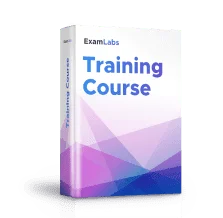Pass CompTIA CTT+ TK0-201 Exam in First Attempt Easily
Latest CompTIA CTT+ TK0-201 Practice Test Questions, CTT+ Exam Dumps
Accurate & Verified Answers As Experienced in the Actual Test!


Check our Last Week Results!
- Premium File 456 Questions & Answers
Last Update: Feb 23, 2025 - Training Course 97 Lectures
- Study Guide 531 Pages



Download Free CompTIA CTT+ TK0-201 Exam Dumps, CTT+ Practice Test
| File Name | Size | Downloads | |
|---|---|---|---|
| comptia |
373.2 KB | 1332 | Download |
| comptia |
373.2 KB | 1446 | Download |
| comptia |
367.4 KB | 1612 | Download |
| comptia |
336.6 KB | 3053 | Download |
Free VCE files for CompTIA CTT+ TK0-201 certification practice test questions and answers, exam dumps are uploaded by real users who have taken the exam recently. Download the latest TK0-201 CompTIA CTT+ Essentials certification exam practice test questions and answers and sign up for free on Exam-Labs.
CompTIA CTT+ TK0-201 Practice Test Questions, CompTIA CTT+ TK0-201 Exam dumps

Course Introduction
1. Benefits of Getting Certified with CompTIA
I wanted to take a few minutes to talk about the benefits of having the CTT Plus certification. The purpose of the certification is to prepare someone for entrance into the field of technical training, obviously. And it's meant to demonstrate that you've met a certain level of excellence in terms of being able to train complex topics. So, as you know, CompTIA is a provider of technical certifications. But if you've worked at all in technology, you recognise that there is a big difference between being able to perform a technical task and being able to communicate it to others—to really teach it to others. And so this certification is meant to fill that gap. It is to give evidence that somebody not only can understand a complex topic but can also communicate it to others and has a certain level of public speaking ability, or presentation ability, so that they could lead a class to learn a new skill or ability. So that's what the certification says about you when it's on your resume. Also, it's trusted by some leading organisations like Dell, Microsoft, Adobe, Cisco, and IBM. They all look to the CTT Plus certification as evidence that you're a qualified trainer.
Some people will also get the CTT Plus if they work for an educational provider or an academy, because CompTIA allows you to partner with them as a company. If you have the CTT Plus, and somebody on your staff has the technical trainer certification, then you can become an authorised training partner with CompTIA, and they'll send you some resources, and they'll also help you market and give you some content for your courses. So look into that. If you work for an organization, that can be an excellent opportunity for you to gain some sort of job security in your training organization, because you can convince them to become a training partner with CompTIA. Beyond that, having a training certification really gives you confidence. It allows you to know that you've been certified in this rather than through an organization, internal training, or simply grabbing someone from another project to teach. They can rely on you because you have a certification to backup your ability to communicate and teach technical concepts. Another thing to remember is that even though there's a lot of online learning, people still enjoy having an instructor to guide them through the process of learning a new topic. Reading a book is one thing, but having someone who knows how to do something teach you how to do it is priceless. And so, according to a recent survey, 87% of people who are taking on a new, difficult concept prefer to have instructor-led training as their primary form of training. So this is something that's still very relevant even in a time when we have access to all sorts of materials on the Internet.
2. The Definitive CTT+ Course Outline
Alright, so here we are: the definitive CTT plus everything you need to pass the CompTIA TKO 201, 202, and 203. So I thought I'd start by just giving you an outline of the course, almost like a syllabus of what to expect. Expect this course to be divided up and the information to be divided up so that it is easily accessible to you. So let's just jump right in on that. The first thing we're going to talk about is an overview of the certification itself. So, as you've already heard me refer to, there are three different tests here. What are those tests? What's involved in each of them? How can you be prepared for each of them? What do they look like? What do they feel like? That's what we're going to talk about in the overview of the certification. I'm following that. There is a section of videos for each of the domains of understanding. So according to the official compendium, CTTplus domains of understanding, there are five. Domain one is planning prior to the course, which is where you talk about classroom logistics and course creation. Domain. two methods and media for instructional delivery. This is where you talk about technologies and means to disseminate information to a class. Domain three: instructor credibility and communications. That has to do with your oral presentation skills and ability to manage a classroom. Domain 4 is group facilitation.
That's where a large portion of the information comes from that has to do with activities and group dynamics and adult learning theories and things like that. And domain five is evaluating the training event. So this is what you do as a technical trainer post-class when you evaluate yourself and also the course design, et cetera. So those five domains come from CompTIA itself; it's what the test is based on. And there is a section of videos for each one of those domains. As we move forward after the domain of understanding, we're going to be focusing on the classroom performance-based exam. And this is the part that can kind of make some people nervous because, of course, this is a video submission of you teaching a class a practical application of the skills that you've learned. But don't worry, I'm going to break that down for you. All of the submission details, all of the things you'll need to perform well, and they cover all of the domains of understanding and performance. So there's a section for the TKO 202 and a section for the TKO 203. And depending on which one you choose, you'll probably only watch one of those sections of videos. You're welcome to watch both, but you'll probably choose whether you're going to do a classroom-based or virtual video submission. And then you'll watch the videos in this course that correspond to that selection.
3. CompTIA CTT+ Overview (TK0-201, TK0-202, TK0203)
So first of all, what's the difference? Why are there three tests? TKO 201, 202 Three. Which 01:00 a.m. am I taking? Why do I need to take more than one? These are all kinds of questions. Maybe you're as confused as this guy up here. Don't worry, you're not the first to have these questions. We'll go ahead and break this down so that you understand it. So, first of all, everybody will take the TKO 201.This is a computer-based exam, much like all the other CompTIA certification exams. Perhaps you have a plusnet, plus security, plus this. Multiple-choice questions, single and multiple responses So sometimes it will be "pick the best answer," sometimes it'll be "choose all of the answers that apply," or "choose two answers." But multiple choices And there is the possibility of drag and drops. The most recent time I've taken this test, there were no drags or drops. There's going to be a maximum of 95 questions and 90 minutes to take the test. So, again, this is similar in length to other technical certifications. You have just under a minute per question, but it's plenty of time, especially after this course. A passing score of about 73% is required.
So you'll need to get about 655 out of 900 points to pass the test. And this has to be accomplished before you move on to the second half of this certification exam. So everybody will take the TK 201, which is the computer-based exam. But then after you've passed that, you will have the option to choose either the TKO 202 or the TKO 203. Both of these are performance-based exams. They are video submissions of you teaching a class. The TKO 202 is a video of you teaching an in-person physical classroom class, whereas the TKO 203 is a recording of you teaching an online virtual class through video conference. So you'll be able to choose which one you want to do. And depending on which one you choose, the certification will be the test that you choose, either the 202 or the 203. So, hopefully, that clears it up. Again, this is a video submission. It will have to be between 17 and 22 minutes long. You're scored on all the criteria of the domains of understanding, and you're asked to rope them into your presentation. Again, we'll talk about that. So you know how to do that. And then you have to pass about 36 out of 48 to get a passing score on this. Here's what it looks like. This comes from official CompTIA resources. So again, it shows the TKO 201 computer-based exam. And then you will add to it either the TKO 202 classroom performance-based exam or the TKO 203 virtual classroom performance-based Based Exam.If you pass either of these, you will be a CTT Plus Certified Technical Trainer, either as a classroom trainer or a virtual classroom trainer.
4. CompTIA Official Resources
Let's take a minute to review some of the official resources that CompTIA provides that you can use to prepare for this exam. Here I am at comptia.org, so you can put that in your browser. CompTIA.org is here on certifications, and of course you're going to see CTT Plus. So here on the CTT Plus page, there are some documents that will be very helpful for you to read. You might want to print them out and read them to give you a good overview of what to expect. So after you've read a little bit here about the overview and purpose of the course, there's a section here called CTT Plus Guidelines and Forms. There is also a form here for preparing for the classroom trainer as well as the virtual trainer. And this is a very well prepared document with a lot of information about how they score the video submission and how to prepare. So this is information that we're going to be discussing in this course, but it might be nice to read it. Also, you can print this out, or I'll save it as a PDF, and read it when you have a few minutes. So that's how to prepare for the performance-based course. Also here, we'll have the submission forms for the video performance-based submission. We'll go over that later too. but this is how you find it here. Also, I wanted to show you this. This is get practise questions and exam objectives. If you see this right here, you can just submit a little bit of information about yourself and a bit about your job description. Choose the exam you're looking for, TKO 201, and put it in the country.
You want to have some exam objectives and practise questions. I'm currently training and plan on taking the exam in one to two months. Agree to the terms, and as soon as you submit that, you will have two things. First of all, the exam objectives and practise questions So the exam objectives are what we're going to be going over in a subsequent video. We'll be going over the domains in depth, but this is CompTIA's version of that. You can see all the five domains, some details about the course, and the test itself. Again, I recommend printing this out and reading it when you have a moment. They also have some practise questions here. There aren't very many practise questions provided here. It's really not the end of your preparation for your exam. I've included a lot more practise exams in this course as part of the course materials. But you can look at a few here to get a sense of what the questions are going to be like on the TKO 201 computer-based exam. So it would be worth downloading this and practising them as you get through the course. When it comes time to buy the exam, you can get your vouchers here. one thing I failed to discuss in the previous video, but it's important to know. You're going to be purchasing two tests. As I mentioned, you're taking TKO 201. And in addition to it, either the TKO 202 or two three.So you're going to have to purchase both of those. First of all, you'll purchase TKO 201, which is an essential. And then when you're ready, you'll purchase the classroom trainer or the virtual classroom trainer. So that brings the cost to a little bit over $650. But remember, you will be buying two of those vouchers. So anyhow, this is @comptia.org This is how you can find the official resources to prepare yourself for the exam.
5. CTT+ Exam Domains
Let's dive right into the CompTIA domains of understanding for the CTT Plus. And this is the document that I just instructed you to download from CompTIA.org, called the CompTIA CTT Plus Certification Exam Objectives And if you come down here to pagethree, you'll see the weight that each domainof understanding receives on the exam. So all of them are at about 15%, except for the Group Facilitation domain for.So I tell you this just to make sure that you know where to focus your efforts in your preparation. Of course you want to be prepared for all of these domains, but group facilitation is specifically heavy on evaluation, so you want to make sure that you're thoroughly prepared for that. Domain One is broken into two subdomains. So domain one is planning ahead of time for the course. So this is everything that goes into developing a course—not only the course creation but also how you plan as an instructor to facilitate a course appropriately. Subdomain A is responsible for reviewing learning objections and matching them to learner and organisational needs. So this is about the purpose of your class, how to identify why you're being asked to teach it and what the learners really need to know, and then how to build a course around that. The second subdomain is "create an environment conducive to learning."
This has to do with classroom logistics, everything from the temperature of the room and how to handle miscellaneous cables to technical devices, seating charts, and things like that. Domain two is "methods and media" for instructional delivery. So this has to do with, again, methods of delivery. So different techniques for speaking to aclass and teaching, and also media. So presentation styles, different resources, technologiesand tools to present learning concepts. So the subdomains two A isselect and implement delivery methods. So you're going to be talking a little bit about delivering instruction, different kinds of learning theories, different kinds of learners, and how to apply different methods of instruction given the learning types. So that's a very interesting section. Then there's the use of instructional media. How do you use slideshows correctly? How do you use video and graphics? Also on the virtual platform, what online tools or virtual tools can you use in your classroom to make them engaging for the learner? You'll talk about that there. The third domain is instructor credibility and communications. So this is all about how to assert yourself confidently in the classroom and how to really command yourself. So this is broken up into the subdomainsdemonstrate Professional Conduct and Content expertise, how tomake sure you know what you're talking about,what to do if you're caught not knowingsomething about a technical concept. Also consider your professional appearance, posture, and body language. Poise. Three B is using communication and presentation skills to facilitate learning. So this is where we talk about all communication and public speaking: how to use gestures and facial expressions; how to make sure that our speech is not offensive to anybody; things like that. And then here's the big one, group facilitation.
So in Four A, establish and maintain a learner-centered environment. So, how do you ensure that this isn't all about you as the instructor or the organization, but that all of your teaching practises are centred on the individual learner, with their goals, purposes, and motivations in mind? Use a variety of question types and techniques. So how do we use different forms of questions to engage listeners and create certain types of outcomes in a classroom? There are a number of questions about that on the exam. Four C address learner needsfor additional explanation and encouragement. What to do when a student doesn't understand completely, when they look lost, when somebody lags behind, when they lack motivation or get disinterested And then 4D motivates and reinforces learners. So again, this has to do with motivation, following up after the class, and things like that. In domain five, we are evaluating the training event. Five A is evaluating learner performance throughout the training event, how to develop quizzes and assessments, when to give them, what types of assessments you can use, and when they're appropriate. Five B assess trainer performance and delivery. Of course, this is where you are reflective and you look at your own performance and your own course design to see how it works, what you would improve next time, and how to communicate that to the training organization. So those are the domains. We're going to dive deep into these, break them down, and ensure that we've hit on all of the topics under discussion, but I wanted you to have an overall view of what we're going to be talking about in this course.

Planning Prior to the Course (Domain 1)
1. Overview - Domain 1
The moment of truth with technical training is when you're standing in front of an audience, or when you're standing in front of your classroom. These are your peers; these are adults; these are knowledgeable, intelligent people—people you already know. And you want to make sure that you're well prepared to deliver something substantive, as well as that you can do so confidently and easily. Preparation prior to the course includes all these things. And the more prepared you are, the better the class you're going to give. So we don't just rest on our existing knowledge of the technical concept, but we give the appropriate attention to course development and classroom logistics to make sure that everything goes smoothly when we actually deliver the class. So, domain one, we talk about how to develop a course, how to speak to an organisation to find out why they're even doing the course, and how to figure out what learners already know so that you understand what the knowledge gaps are. We also talk about a couple of frameworks for developing classes to make sure that they're thorough and really fleshed out before you deliver the class. We also talk about classroom environment creation, how to set up the seats, how to set the temperature, and how to avoid disasters with technology. All of that is in Domain One. So that's what you have to look forward to. And let's make sure that we plan our course correctly.
2. Identify Learner & Organizational Needs
So before you can even begin developing a curriculum or planning for training, you really need to be able to answer the question, "Why are we doing this training at all?" What are the needs that are going to be filled by this training? To answer that question, you need to draw information from two sources. Number one, the organisation offering the training, and number two, the learners that will be trained So first of all, what needs of the organisation are we hoping to fill by offering this training? And second, what do the learners need to know so that they can change their behaviour and be more effective in the future? So organisations can offer training for a number of different reasons. Perhaps you're working with a technology academy, and they offer programmes as their main source of income. So their marketing training programmes are for people who are interested in getting started in IT and trying to get technical certifications. So that's one possible need. But intra-organizationally, it could be a matter of training employees. There could be some negligence on the part of the employee; there could be some increased efficiency that could be accomplished if employees had greater skills. But organisations often need to understand what the return on investment is. So if I'm spending money on training, I'm paying you, I'm paying for materials, and I'm taking time away from productivity. For people to be trained, organisations need to understand clearly what they're getting back as a return on that investment. But these organisational needs can be varied. So just as a personal story, I worked with a training organisation that was contracting with a federal agency. And this federal agency realised that some of their employees were not taking care of important tasks that affected the overall risk posture of the organization. And this had to do with compliance with federal regulations for risk assurance. And so they really needed to train their employees so that they felt confident enough to do these risk-related tasks and so that the agency could remain in compliance.
So that was their specific need that we had to take into mind as we were developing the course. Second, we have learner needs, so it's good to know what skills the employees already have or what skills the learners already have, and then what they need to know so that you can fill in the gap with the training. What skills, knowledge, or abilities do they need so that they can reach their goals? Okay, so organisational needs dictate that in order to gather this information, you're going to need stakeholder input. So you'll need to speak with executives who perhaps have their finger on the pulse of the organization. It could be that the HR department hiring staff is very aware of the skills that they're not finding in new recruits and that they might need to train internally. And it could also be managers and team members, right? So they're doing the work on the ground. Managers are very well aware that their team members don't have a certain skill, and maybe even team members say, "Hey, we don't have anyone on our team that knows how to do this or that," and that's why we need this training to develop these skills. You're identifying gaps in understanding, you're trying to enhance competencies that are already existing so you can increase productivity or efficiency, and again, it could be emerging or future technologies that need to be trained.
And again, we want to make this specific, especially if you're working in an organisation that's training employees—make it specific to their day-to-day job. So what will they be able to take from the training and apply to make them a better employee in their current job role? And for this reason, you can't be too broad; you have to really dial it into some specific outcomes that you're looking for. So again, this is not just knowledge but also application. And the distinction is that knowledge is informational; it is conceptual; it is about memorising information or comprehending a topic. However, application refers to the actual technical capability that you hope these students will leave your course with, which will be unique to the learner and their various job roles. Once you've had these conversations, you've sat with organisational stakeholders and learners and figured out where the gaps are and know how to address these needs. You will be able to clearly define and articulate the learning outcome for the course and the learning outcome and instructional goal, which are high-level objectives of the course itself. And here's an example of client relations management software training. Employees will learn CRM functionality for creating email templates, organising a sales pipeline, and integrating social media platforms. So it's clear what the training is: it's about the CRM software, and it's clear what the instructional outcomes are going to be. They'll have to know how to create email templates, organize sales pipelines, and integrate social media platforms. So that's the goal after this conversation, after you've addressed the need to be able to clearly articulate your instructional goals.
CompTIA CTT+ TK0-201 Exam Dumps, CompTIA CTT+ TK0-201 Practice Test Questions and Answers
Do you have questions about our TK0-201 CompTIA CTT+ Essentials practice test questions and answers or any of our products? If you are not clear about our CompTIA CTT+ TK0-201 exam practice test questions, you can read the FAQ below.
Purchase CompTIA CTT+ TK0-201 Exam Training Products Individually













